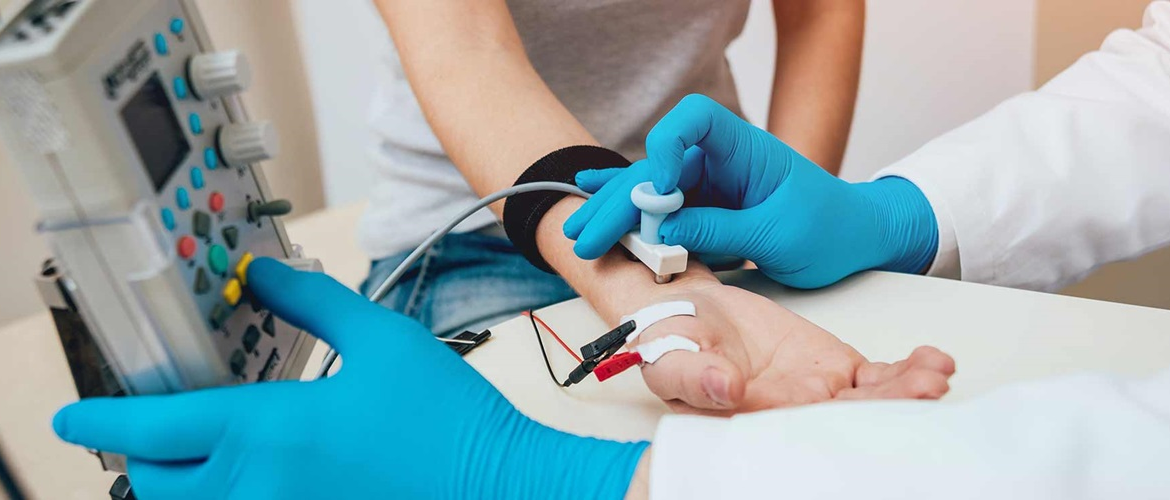Evoked Potential Studies

Evoked Potential Studies
WHAT IS ELECTROMYOGRAPHY?
(Evoked Brain Potentials, Evoked Responses, Visual Evoked Response [VER], Brainstem Auditory Evoked Response [ABER], Somatosensory Evoked Response [SER])
Procedure Overview
Evoked potentials studies measure electrical activity in the brain in response to stimulation of sight, sound, or touch. Stimuli delivered to the brain through each of these senses evoke minute electrical signals. These signals travel along the nerves and through the spinal cord to specific regions of the brain and are picked up by electrodes, amplified, and displayed for a physician to interpret.
Different types of evoked potentials studies:
Evoked potentials studies involve three major tests that measure response to visual, auditory, and electrical stimuli.
visual evoked response (VER) test – can diagnose problems with the optic nerves that affect sight.
Electrodes are placed along the scalp. The patient is asked to watch a checkerboard pattern flash for
several minutes on a screen, and the electrical responses in the brain are recorded.
brainstem auditory evoked response (BAER) test – can diagnose hearing ability and can indicate the
presence of brain stem tumors and multiple sclerosis. Electrodes are placed on the scalp and earlobes.
Auditory stimuli, such as clicking noises and tones, are delivered to one ear.
somatosensory evoked response (SSER) test – can detect problems with the spinal cord as well as
numbness and weakness of the extremities. For this test, electrodes are attached to the wrist, the back
of the knee, or other locations. A mild electrical stimulus is applied through the electrodes. Electrodes on
the scalp then determine the amount of time it takes for the current to travel along the nerve to the brain.
A related procedure that may be performed is an electroencephalogram (EEG). An EEG measures spontaneous electrical activity of the brain. Please see this procedure for additional information.
Vivacare public information from The National Institute of Neurological Disorders and Stroke
Last updated January 24, 2008
This information is for general educational uses only. It may not apply to you and your specific medical needs. This information should not be used in place of a visit, call, consultation with or the advice of your physician or health care professional. Communicate promptly with your physician or other health care professional with any health-related questions or concerns.
Be sure to follow specific instructions given to you by your physician or health care professional.
